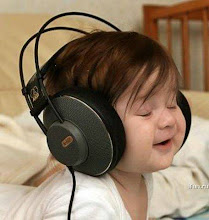Ken Burns Jazz
Sorry I haven’t been very regular with this blog lately. Work has been crazy busy for me. But enough of that.So, I mentioned watching Ken Burns’ Jazz a couple weeks ago and now that I’ve had some time to absorb and reflect, I thought I’d let you know a little bit about it. First of all, I must say it was some of the most interesting cinema I’ve seen in a while, (although it seemed to devote a little too much time to the period right before the big band era.)
One big theme is that of jazz being a symbol of American freedom. In my thought before seeing this film, I was already heading in the direction of jazz being a music of personal freedom. The whole process of improvisation is a very liberated idea. And the concept of group improvisation is, as I’ve said elsewhere, even more novel.
But what the film revealed to me was the importance of jazz during World War II. The country was swing-crazy. But across the ocean, jazz was a forbidden music, largely because of its association with African Americans and Jews-music of “subhumans,” as one German official called it. I had no idea about that little fact. And so, when a European gypsy like Django Reinhardt played American jazz standards with altered names to keep out of trouble- that was a pretty subversive act. The patriotism of swing and jazz during the 40’s was lost on me until I saw this film.
I also didn’t realize how “academic” the be-boppers were in comparison to what else was going on in the 50’s. I was exposed to Dizzy Gillespie and Charlie Parker pretty early on, so it just seemed to naturally belong under the “jazz” category for me, but not so at the time. Be-bop was kind of like anti-dance music. (Strange, when you think about how much the Beats loved it.) This film made be-bop out to be nothing short of a revolution.
The aesthetics of jazz seemed to get a little confused after be-bop, spectralizing into several different directions, which I kind of assumed.
Anyway, this documentary was obviously very thorough, touching all of the most famous players and moments. And when you’ve got 10 DVDs of time to kill, that’s pretty easy to do. Overall, I wonder who this film is for: history-type people, or music-type people. Obviously, both will find plenty of stuff of interest.
And so, I’ve been on a bit of a jazz kick since watching this, pulling out the Miles Davis, Duke Ellington, and Charlie Christian, and soon I’ll need to re-visit all of the Wynton Marsalis stuff that fed my brain in my junior-high and early high school years.


0 Comments:
Post a Comment
<< Home